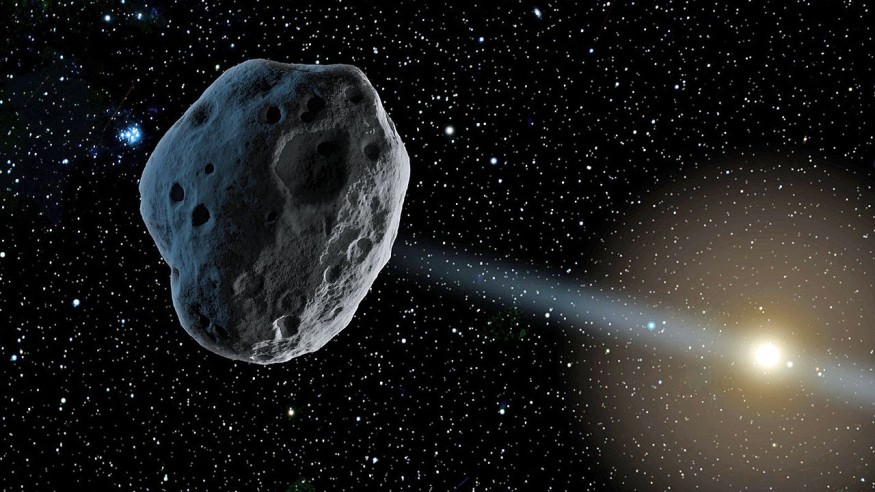NASA said that two asteroids will make one of its closest known approaches to Earth next month. One is Asteroid 2013 YD48, which is as big as the Great Big Ben. The other is Asteroid 7482 (1994 PC1), which is twice the size of the Empire State Building.

January 11: Asteroid 2013 YD48
The Sun said that an asteroid the size of the Great Big Ben will pass through Earth's atmosphere next month. The space rock, dubbed Asteroid 2013 YD48, is roughly 104 meters wide (340 feet) and will pass Earth on January 11 at a distance of 5,600,000 kilometers.
While it may appear to be a big distance, according to Lad Bible, it is only a short distance in terms of space. NASA clarified that any space objects approaching Earth within 120 million miles are categorized as Near-Earth Objects (NEOs).
According to The Sun, the space object is classified as a potentially deadly asteroid. Furthermore, NASA's Asteroid Watch Dashboard is now tracking the asteroid 2013 YD48.
The dashboard shows the next five Earth approaches within 4.6 million miles (7.5 million kilometers, or 19.5 times the distance to the moon). According to NASA, an object larger than around 150 meters can reach the Earth within this distance is classified as a potentially dangerous item.
Asteroid 2013 YD48 was found on December 29, 2013, to underscore the point. This asteroid is also a member of the Apollo group. The Sky Org said the asteroid 2013 YD48 orbits the Sun at 459 million kilometers from its aphelion (furthest point from the Sun) and 116 million kilometers from its perihelion (closest point to the Sun). Furthermore, it appears that an asteroid collided with our planet on January 15, 2014, at a distance of 7.71 million kilometers.
January 18: Asteroid 7482 (1994 PC1)
On January 18, asteroid 1994 PC1 will pass Earth at 0.013 astronomical units. According to NASA's Center for Near-Earth Object Studies (CNEOS), this is a "near approach." However, the distance is roughly 1.2 million miles-more than five times the distance between us and the moon. Every year, a large number of asteroids pass near to Earth.
The size of 1994 PC1 is one of the reasons it is classified as a potentially hazardous asteroid (PHA). The space rock is predicted to be roughly 1 kilometer or 3,280 feet in diameter-give or take 1,000 feet-or 2.5 times the height of the Empire State Building, according to CNEOS.
Asteroid 1994 PC1 is expected to travel at a speed of roughly 43,000 miles per hour when it passes past Earth in a few weeks. After that, it will return to the solar system to orbit the Sun once more, which it does every 1.5 years or so. However, according to NASA, it won't get this near to Earth again for decades, not until 2105.
According to EarthSky, R.H. McNaught found 1994 PC1 at the Siding Spring Observatory in Australia in 1994.
About Asteroids
According to CNEOS, any asteroid that can't approach closer to Earth than 4.6 million miles or is less than 500 feet in diameter isn't considered a potentially hazardous object.
Thousands of known asteroids are constantly tracked by systems if one of them presents a risk to Earth. CNEOS now counts over 28,000 known near-Earth asteroids, with about 1,000 of those measuring more than a kilometer (3,280 feet) in diameter. None of them are predicted to crash with the Earth anytime soon as of writing.
On the other hand, scientists are still planning for such an occurrence. NASA launched the Double Asteroid Redirection Test (DART) mission in November of this year, the world's first mission to test technologies capable of safeguarding Earth from an impending space rock.
The DART mission spacecraft will collide into the side of Dimorphos, a tiny space rock, at a speed of roughly four miles per second next year. Scientists will next determine how big of a difference this influence has on the trajectory of the object through space.
RELATED ARTICLE : NASA Spotted a Bus-Sized Asteroid Heading to Earth in Early 2022; Is It a Threat to The Planet and Humanity?
Check out more news and information on Space in Science Times.









